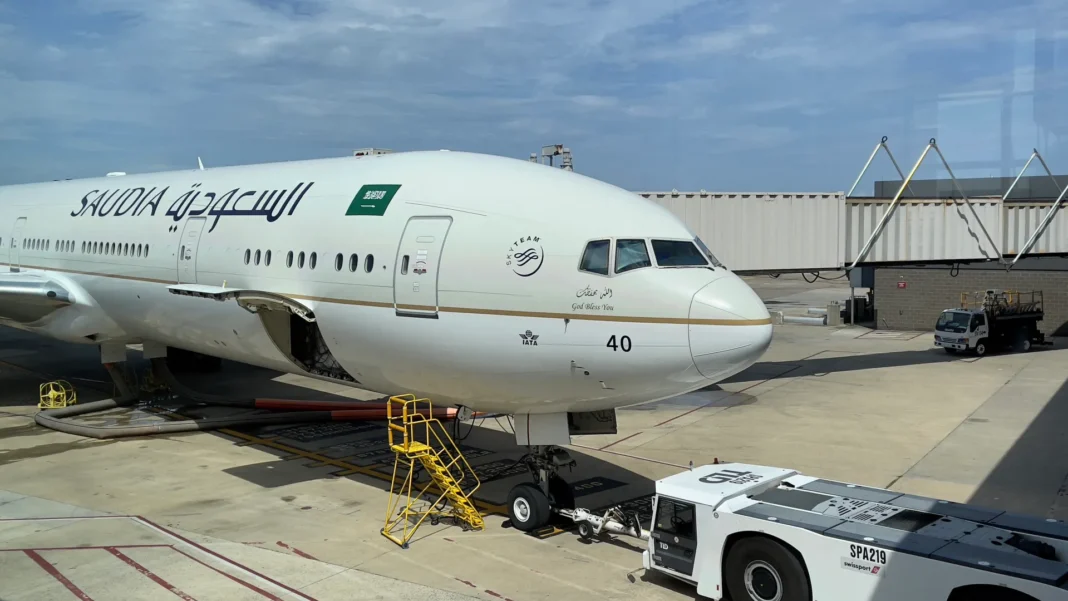Saudi Arabia opens airspace to over 1,300 daily flights during regional crisis, responding quickly to the sharp rise in transit traffic. As tensions escalated across the region, the Kingdom took immediate steps to maintain smooth air navigation and support global flight operations.
In recent days, Saudi skies have handled over 1,330 flights daily. This is nearly double the volume before the crisis began. The government mobilized all human and technical resources to manage this growing demand effectively and without disruption.
To handle the surge, authorities opened new air corridors across the country. These measures ensured safe routing and efficient flight movement. All operations were carried out under international aviation standards and safety regulations.
Moreover, Saudi Arabia’s aviation system relies on cutting-edge navigational tools and real-time tracking technology. These systems allowed traffic controllers to maintain order despite the sharp traffic increase. Operators worked closely with local and regional partners to ensure continuous coordination.
More than 220 air carriers have passed through Saudi airspace since the crisis started. These carriers benefited from expanded flight paths and optimized scheduling. Aviation teams used advanced data systems to adapt to fast-changing air traffic conditions.
Saudi Arabia opens airspace to over 1,300 daily flights during regional crisis, showcasing its commitment to global aviation stability. The General Authority of Civil Aviation led the coordinated response across national control centers and airports.
The country currently operates 20 control towers and two regional centers that cover 15 air sectors. Ten approach control centers and over 1,200 navigation devices are in use nationwide. A skilled workforce of over 1,900 professionals, including more than 700 certified air traffic controllers, manage these operations daily.
Saudi Arabia opens airspace to over 1,300 daily flights during regional crisis, reinforcing its key role in international air travel. The nation’s fast response and aviation capacity helped prevent delays and supported airlines during a critical time.





